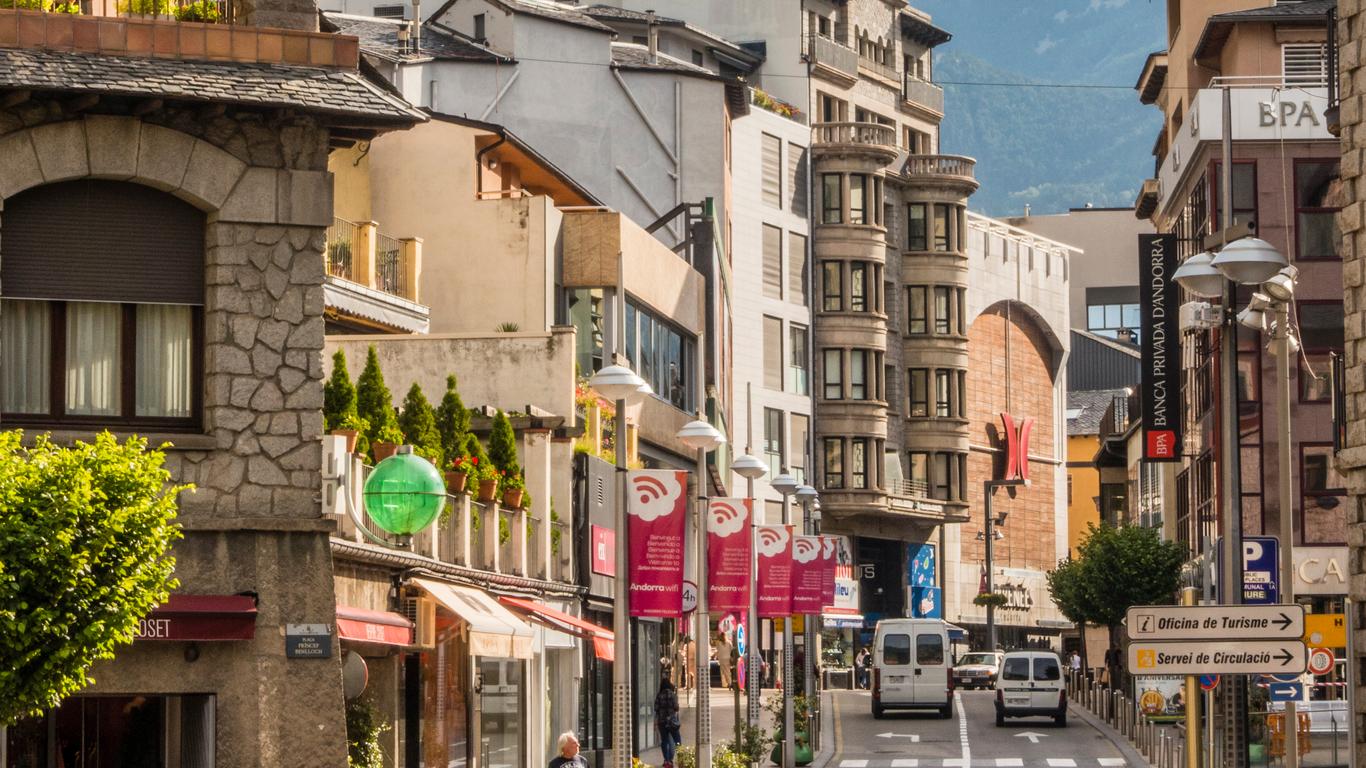Nestled high up in the Pyrenees Mountains between France and Spain is the city of Andorra la Vella. It is the highest capital city in Europe and a popular ski resort in Europe.
Andorra la Vella’s charismatic Old Town features narrow cobblestone streets lined with restaurants, art galleries and eclectic boutiques. It is here that most of the city’s major sights are found, including the Iglesia de Sant Esteve which dates to the 12th century. Also of note is the Romanesque-style Church of Sant Andreu and the 9th century church of Santa Coloma which boasts one of the only remaining Lombard belfries in the Pyrenees. Heritage-listed Casa de la Vall is the seat of the General Council of Andorra, built in 1580 as a manor farmhouse by the Busquets family. It includes a small chapel dedicated to St. Ermengol and a garden sculpture designed by Francesc Viladomat, together with the "closet of the seven keys" where historical documents such as the Manual Digest and Politar Andorra are kept. A monument of Salvador Dali’s “Noblesse du Temps” lies on the southern banks of the Valira River, opposite the outdoor museum of Roques al Carrer which showcases the area’s unique geology. To the south-east of the town sprawls the glacial-carved landscapes of the Madriu-Perafita-Claror Valley which have been designated as a UNESCO World Heritage Site. Walking trails traverse its dramatic landscapes which are home to a number of rare and endangered wildlife species, together with remains of the ironworking industry which operated here for more than 700 years. Andorra la Vella is also within easy access of the surrounding ski resorts, and snowmobile excursions are available during the winter months.
Andorra–La Seu d'Urgell Airport lies to the south of the city centre and has domestic flights across Spain, while shuttle buses connect it with train stations at L'Hospitalet-près-l'Andorre in France and Lleida in Spain. The town itself is quite small and can easily be explored on foot.
The area that is now Andorra la Vella has been inhabited at least as far back as the late-Neolithic when the Andosin tribe settled here. It was in 1278 that the French and Episcopal co-princes agreed to a joint suzerainty, with Andorra la Vella developed as a tax haven towards the end of the 20th century.





